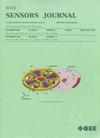基于共同空间模式的选定脑电信号的情绪识别
IF 4.3
2区 综合性期刊
Q1 ENGINEERING, ELECTRICAL & ELECTRONIC
引用次数: 0
摘要
作为评估人类情绪状态的一种更可靠的方法,脑电图(EEG)信号已被广泛用于情绪识别。本文提出了一种基于脑电图的情绪识别方法,该方法利用共同空间模式(CSP)从电极通道中提取和选择特征。为了减少冗余数据并选择关键特征,本文采用非参数检验从上海交通大学情绪脑电图数据集(SEED)中选择电极通道和频带子集。该测试评估了每个通道的差分熵(DE)特征,从而根据测试结果区分出六个不同的通道子集。此外,我们还确定了一个特定频段,该频段经过优化,可用于有效的情绪识别。在每个子集上都部署了所提出的方法,并通过空间滤波获得 CSP 特征,以进行特征选择。对所选的 CSP 特征采用批量归一化(BN)方法,以减轻个体差异对情绪识别的影响。然后使用十种经典的情绪识别分类器来评估归一化 CSP 特征的性能。所选电极的最佳识别准确率为 88.89%,伽马频段的识别准确率为 85.92%。BN 的应用提高了每个通道子集的识别准确率。值得注意的是,根据非参数检验,我们的方法获得的 CSP 特征显示出显著的区别,并通过应用 BN 得到进一步改善。这些结果凸显了我们提出的方法在仅使用 13 个电极通道和一个频段进行情绪识别时的有效性。本文章由计算机程序翻译,如有差异,请以英文原文为准。
Emotion Recognition Based on Selected EEG Signals by Common Spatial Pattern
As a more reliable method for assessing human emotional states, electroencephalogram (EEG) signals have been widely used for emotion recognition. In this article, an EEG-based emotion recognition method is proposed, which uses a common spatial pattern (CSP) to extract and select features from the electrode channels. To reduce the redundant data and select key features, the nonparametric test is applied to select a subset of electrode channels and frequency bands from the SJTU emotion EEG dataset (SEED). The test evaluates the differential entropy (DE) features of each channel, resulting in six distinct channel subsets distinguished by their test outcomes. Furthermore, we identify a specific frequency band optimized for effective emotion recognition. The proposed approach is deployed on each subset and the CSP features are obtained through spatial filtering for feature selection. A method of batch normalization (BN) is used on the selected CSP features to mitigate the influence of individual differences on emotion recognition. The performance of the normalized CSP features is then assessed by using ten classical classifiers for emotion recognition. The best recognition accuracy is 88.89% for the selected electrodes and 85.92% for the gamma frequency band. The application of BN enhances the recognition accuracy across each channel subset. Notably, according to the nonparametric test, the CSP features obtained by our method exhibit significant distinctions and are further improved by the application of BN. These results underscore the effectiveness of our proposed method for emotion recognition using only 13 electrode channels and one frequency band.
求助全文
通过发布文献求助,成功后即可免费获取论文全文。
去求助
来源期刊

IEEE Sensors Journal
工程技术-工程:电子与电气
CiteScore
7.70
自引率
14.00%
发文量
2058
审稿时长
5.2 months
期刊介绍:
The fields of interest of the IEEE Sensors Journal are the theory, design , fabrication, manufacturing and applications of devices for sensing and transducing physical, chemical and biological phenomena, with emphasis on the electronics and physics aspect of sensors and integrated sensors-actuators. IEEE Sensors Journal deals with the following:
-Sensor Phenomenology, Modelling, and Evaluation
-Sensor Materials, Processing, and Fabrication
-Chemical and Gas Sensors
-Microfluidics and Biosensors
-Optical Sensors
-Physical Sensors: Temperature, Mechanical, Magnetic, and others
-Acoustic and Ultrasonic Sensors
-Sensor Packaging
-Sensor Networks
-Sensor Applications
-Sensor Systems: Signals, Processing, and Interfaces
-Actuators and Sensor Power Systems
-Sensor Signal Processing for high precision and stability (amplification, filtering, linearization, modulation/demodulation) and under harsh conditions (EMC, radiation, humidity, temperature); energy consumption/harvesting
-Sensor Data Processing (soft computing with sensor data, e.g., pattern recognition, machine learning, evolutionary computation; sensor data fusion, processing of wave e.g., electromagnetic and acoustic; and non-wave, e.g., chemical, gravity, particle, thermal, radiative and non-radiative sensor data, detection, estimation and classification based on sensor data)
-Sensors in Industrial Practice
 求助内容:
求助内容: 应助结果提醒方式:
应助结果提醒方式:


